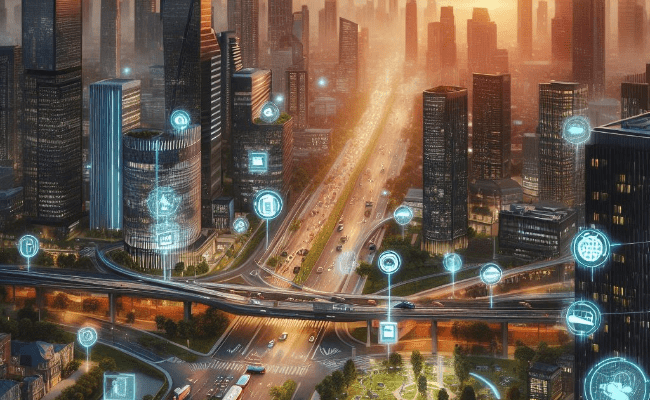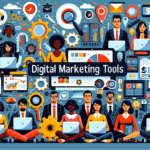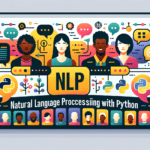The advent of the Internet of Things (IoT) is revolutionizing the way cities operate, giving rise to the concept of smart cities. These interconnected urban environments leverage IoT technology to enhance the quality of life for residents, optimize resource management, and create sustainable communities. This article delves into the intricate relationship between smart cities and the Internet of Things, exploring their impact on urban infrastructure, transportation, public safety, and sustainability.
Enhancing the Infrastructure of Smart Cities with IoT
The backbone of any smart city is its infrastructure, and IoT plays a pivotal role in modernizing it. Smart cities use IoT devices and sensors to gather real-time data on various aspects of urban life, from traffic flow to energy consumption. This data is then analyzed to make informed decisions that improve efficiency and reduce costs.
For instance, smart grids, which are a key component of smart cities, utilize IoT technology to monitor and manage electricity distribution. These grids can detect outages, balance loads, and even integrate renewable energy sources more effectively. Similarly, smart water management systems use sensors to monitor water quality and detect leaks, ensuring a more efficient and sustainable water supply.
Moreover, IoT-driven infrastructure extends to buildings and public spaces. Smart buildings equipped with IoT devices can monitor and control heating, ventilation, and air conditioning (HVAC) systems, lighting, and security systems, enhancing energy efficiency and security. In public spaces, IoT-enabled lighting systems can adjust brightness based on the time of day and pedestrian activity, improving safety while reducing energy consumption.
Transforming Urban Transportation
Transportation is another critical area where smart cities and the Internet of Things converge to bring about significant improvements. IoT technologies facilitate the creation of intelligent transportation systems (ITS) that enhance the efficiency and safety of urban mobility.
One of the primary applications of IoT in transportation is traffic management. Smart traffic lights and IoT-enabled traffic monitoring systems can adapt to real-time conditions, reducing congestion and minimizing travel times. These systems can also communicate with connected vehicles to provide drivers with up-to-date traffic information and alternative route suggestions.
Public transportation systems also benefit from IoT integration. Smart buses and trains equipped with IoT sensors can provide real-time information on their location and occupancy levels, allowing commuters to plan their journeys more effectively. Additionally, IoT-enabled ticketing systems streamline fare collection and reduce the need for physical tickets, making public transportation more user-friendly.
The advent of autonomous vehicles is another area where the IoT is making waves. These self-driving cars rely heavily on IoT technology to navigate and interact with other vehicles and infrastructure. By reducing human error, autonomous vehicles promise to enhance road safety and efficiency in smart cities.
Improving Public Safety and Emergency Response
The safety and security of residents are paramount in any city, and IoT technology is playing a crucial role in enhancing public safety in smart cities. IoT-enabled surveillance systems, for example, provide real-time monitoring and analytics, helping law enforcement agencies respond more swiftly to incidents.
Smart cities are also leveraging IoT for emergency response. Connected sensors can detect hazards such as fires, gas leaks, or natural disasters and alert emergency services immediately. IoT devices can also monitor environmental conditions, such as air quality and radiation levels, providing valuable data for public health and safety.
Furthermore, IoT technology facilitates the development of smart emergency response systems. These systems can use data from various IoT devices to coordinate and optimize the deployment of emergency services, ensuring a faster and more efficient response. For instance, smart traffic management systems can create clear paths for emergency vehicles during an incident, reducing response times and potentially saving lives.
Promoting Sustainability and Environmental Stewardship
One of the most significant benefits of smart cities and the Internet of Things is their potential to promote sustainability and environmental stewardship. By optimizing resource use and reducing waste, IoT technologies help cities become more eco-friendly and resilient.
Smart waste management systems, for example, use IoT sensors to monitor the fill levels of waste bins and optimize collection routes, reducing fuel consumption and emissions. These systems can also provide data on waste generation patterns, helping cities develop more effective recycling and waste reduction strategies.
Energy management is another area where IoT contributes to sustainability. Smart grids, as mentioned earlier, allow for better integration of renewable energy sources and more efficient energy distribution. IoT-enabled building management systems can significantly reduce energy consumption by optimizing heating, cooling, and lighting based on real-time occupancy and environmental conditions.
Water conservation is equally important for sustainable urban living. IoT technology enables smart irrigation systems that adjust watering schedules based on weather conditions and soil moisture levels, reducing water waste. Similarly, smart water meters can provide real-time data on water usage, helping residents and businesses reduce consumption and identify leaks promptly.
Finally, IoT technology supports the development of sustainable urban mobility solutions. By promoting the use of public transportation, cycling, and walking through real-time information and smart infrastructure, cities can reduce their reliance on private vehicles and lower their carbon footprint.
Conclusion
Smart cities and the Internet of Things are reshaping urban living, offering solutions that enhance infrastructure, transportation, public safety, and sustainability. By harnessing the power of IoT technology, cities can become more efficient, livable, and resilient, addressing the challenges of rapid urbanization and environmental degradation. As IoT technology continues to evolve, the vision of fully integrated, intelligent urban environments comes closer to reality, promising a brighter and more sustainable future for urban dwellers worldwide.




